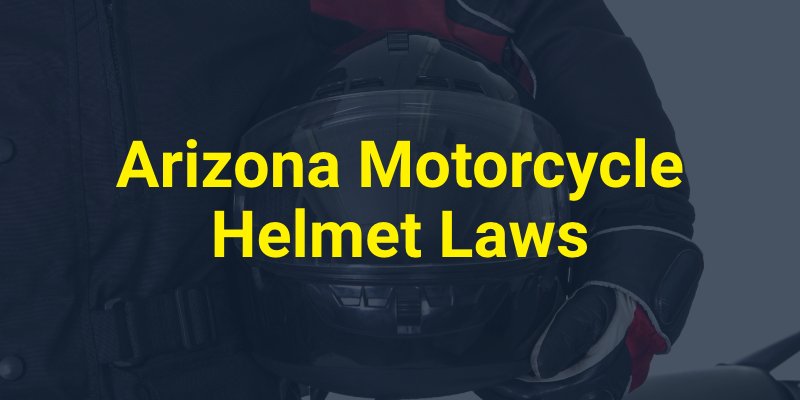Arizona’s motorcycle helmet laws dictate who is required to wear a helmet while riding and under what circumstances. Being aware of these requirements is not only important for riders’ safety but also has potential legal implications in the event of an accident and subsequent injury claims. Here’s what you need to know:

In Arizona, motorcycle helmet laws are defined under A.R.S. 28-964, highlighting that helmet use is mandatory for riders and passengers under the age of 18.
An operator or passenger of a motorcycle, all-terrain vehicle or motor driven cycle who is under eighteen years of age shall wear at all times a protective helmet on the operator’s or passenger’s head in an appropriate manner. The protective helmet shall be safely secured while the operator or passenger is operating or riding on the motorcycle, all-terrain vehicle or motor driven cycle.
These helmets must adhere to the safety specifications outlined in the Federal Motor Vehicle Safety Standard (FMVSS) No. 218 to ensure maximum protection.
While helmets are not required for all riders, there are several other safety gear requirements for all riders. These include the use of protective glasses, goggles, or a transparent face shield unless the motorcycle has a protective windshield.
An operator of a motorcycle, all-terrain vehicle or motor driven cycle shall wear at all times protective glasses, goggles or a transparent face shield of a type approved by the director unless the motorcycle, all-terrain vehicle or motor driven cycle is equipped with a protective windshield.
Additionally, to enhance safety and visibility, motorcycles and ATVs must have a rearview mirror and provide seat and footrests for both the operator and the passenger.
A motorcycle, all-terrain vehicle and motor driven cycle shall be equipped with a rearview mirror, seat and footrests for the operator. A motorcycle, all-terrain vehicle or motor driven cycle operated with a passenger shall be equipped with a seat and footrests for the passenger.
Lighting is another critical safety aspect, with motorcycles required to have at least one headlight that is between 22 and 54 inches tall, and a maximum of two headlights are allowed per vehicle.
A motorcycle, an all-terrain vehicle and a motor driven cycle shall be equipped with at least one and not more than two head lamps that comply with the requirements and limitations of this article.
A head lamp on a motor vehicle, including a motorcycle, an all-terrain vehicle and a motor driven cycle, shall be located at a height of not more than fifty-four inches nor less than twenty-two inches to be measured as provided in section 28-923, subsection B.
If you’re a rider or planning to ride in Arizona, familiarize yourself with the state’s motorcycle helmet and general motorcycle laws to stay safe and adhere to regulations.
The primary reason to wear a motorcycle helmet is the significant reduction in the risk of head injuries and fatalities, but it’s also important to know that not wearing a helmet can adversely affect personal injury claims in the event of an accident.
Insurance companies may offer lower compensation, arguing that injuries could have been mitigated or prevented with helmet use.
This is particularly true for individuals under 18 since the law mandates helmet use. If an underage rider is involved in an accident without a helmet, this can severely impact the outcome of an accident claim.
In the state of Arizona, the principle of comparative negligence would likely play a role in personal injury claims for motorcyclists not wearing helmets at the time of an accident. Under this rule, if you’re found to be partially at fault for your injuries, your damages could be significantly reduced – by the percentage you are found to be liable.
The defense of contributory negligence or of assumption of risk is in all cases a question of fact and shall at all times be left to the jury. If the jury applies either defense, the claimant’s action is not barred, but the full damages shall be reduced in proportion to the relative degree of the claimant’s fault which is a proximate cause of the injury or death, if any.
If you’ve been involved in a Phoenix motorcycle accident and believe someone else may be at least partially responsible, let us help you get the compensation you deserve. Contact us today to schedule a free consultation.